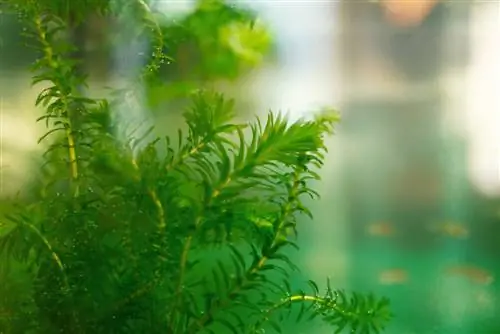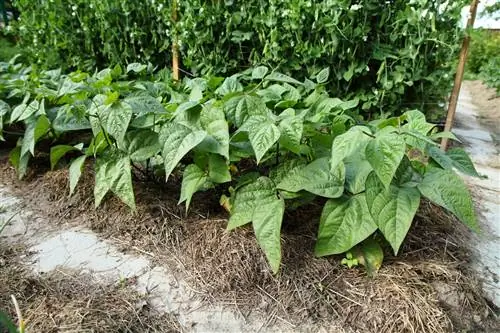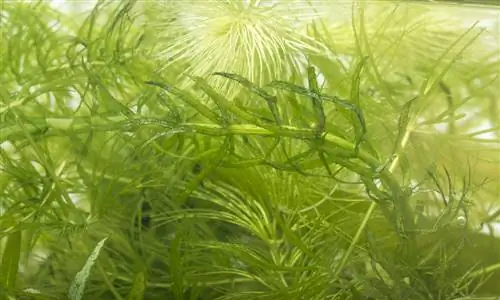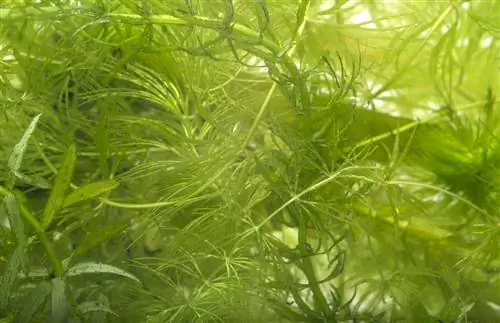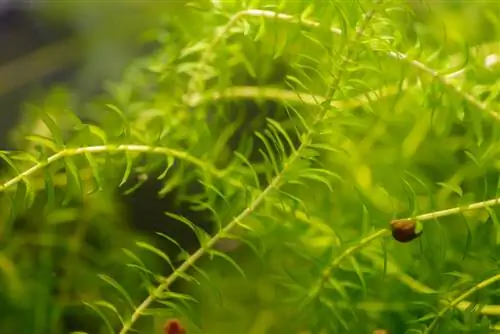- Author admin [email protected].
- Public 2023-12-16 16:46.
- Last modified 2025-01-23 11:22.
The waterweed develops many useful properties in the aquarium. It provides lush vegetation, is a sought-after hiding place for small fish and, with its hunger for nutrients, limits algae growth. However, it takes work to keep their enormous urge to spread in check!
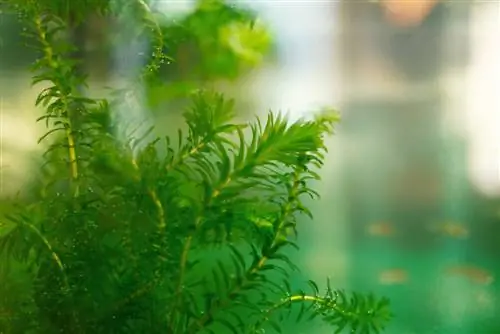
How do you care for waterweed in the aquarium?
The water pest in the aquarium requires a uniform temperature, slightly acidic substrate, indirect lighting, sufficient CO2 and occasional addition of nutrients for he althy growth. Regular cutting helps control the spread of waterweed and maintains the ecosystem in the aquarium.
Planting waterweed
You can choose between different Elodea species for planting in your aquarium. Since the plant is not protected, you can also take it from the wild for propagation. A small section is enough, even without roots, for a new plant to develop.
Basically, you can plant the waterweed in the substrate or let it float in the water. However, for better control of the planting, it is recommended to plant the waterweed at the back of the tank.
Suitable soil and temperature
The waterweed is flexible when it comes to water temperature, but it should be roughly the same in every area of the aquarium.
- ensure water movement and even temperature
- use floor heating with integrated flow
- this also improves the nutrient supply of the waterweed
Avoid using garden or pond soil. In the long term, only a special substrate with clay minerals and quartz sand is really suitable for aquariums.
Needs-based lighting
In the aquarium, natural light is only available to a limited extent and may have to be replaced or supplemented by artificial light sources so that the waterweed thrives optimally. These lighting conditions are ideal for waterweed:
- no direct sunlight
- Indirect lighting is sufficient in a bright location
- If there is a lack of light, use LED lamps by the hour (€24.00 on Amazon) or similar. illuminate
Fertilizer and CO2
In the water element, fertilization must be done with sensitivity, because the nutrients reach all the plants in the aquarium. That's why waterweed is only fertilized if its external appearance indicates a deficiency. For example, through a paler coloring of the leaves.
- do not use garden or flower fertilizer
- use water-soluble aquarium fertilizer
CO2 must also be available in sufficient quantities in the aquarium for waterweed to grow. The gas must be added to the water specifically and regularly. For this aquatic plant, the CO2 value is ideally between 10 and 20 mg/l. Under no circumstances should the value fall below 5 mg/l.
Tip
Use a daily fertilizer that you can dose in a targeted manner until the deficiency symptoms disappear. This way you avoid over-fertilization and the associated risk of unwanted algae blooms.
Cut diligently
If the living conditions in the aquarium are optimally adapted to the waterweed, it will soon spread extensively. Regular cutting is therefore a part of care that should not be neglected. This ensures that the waterweed's urge to spread does not get out of hand and deprives other aquarium plants of their necessary habitat or shades them too much.

